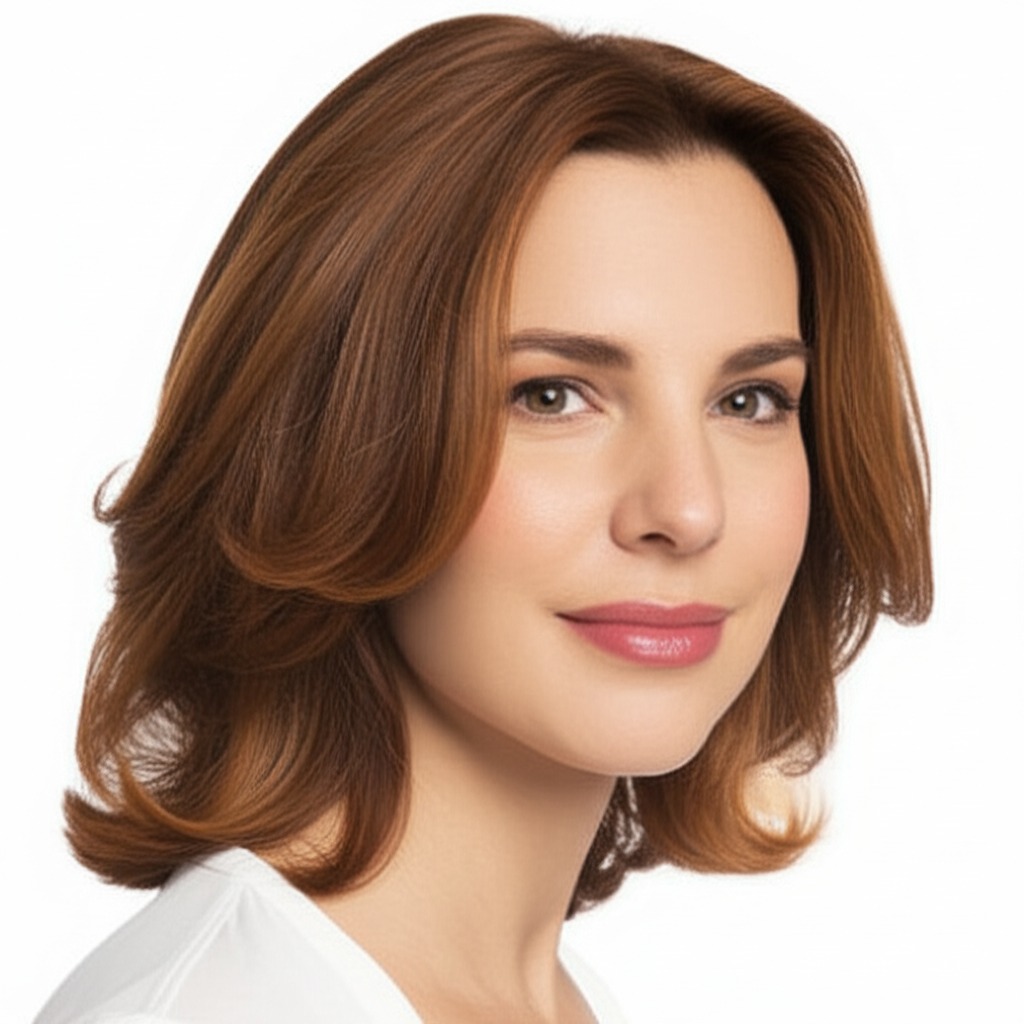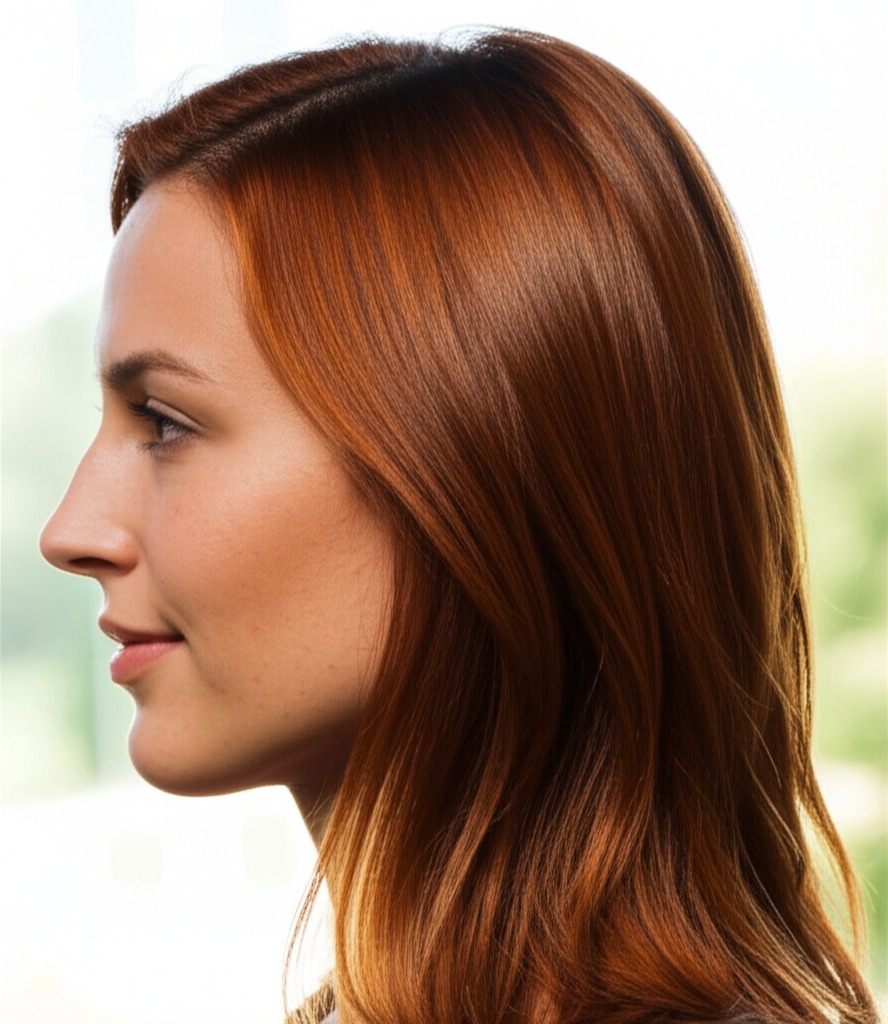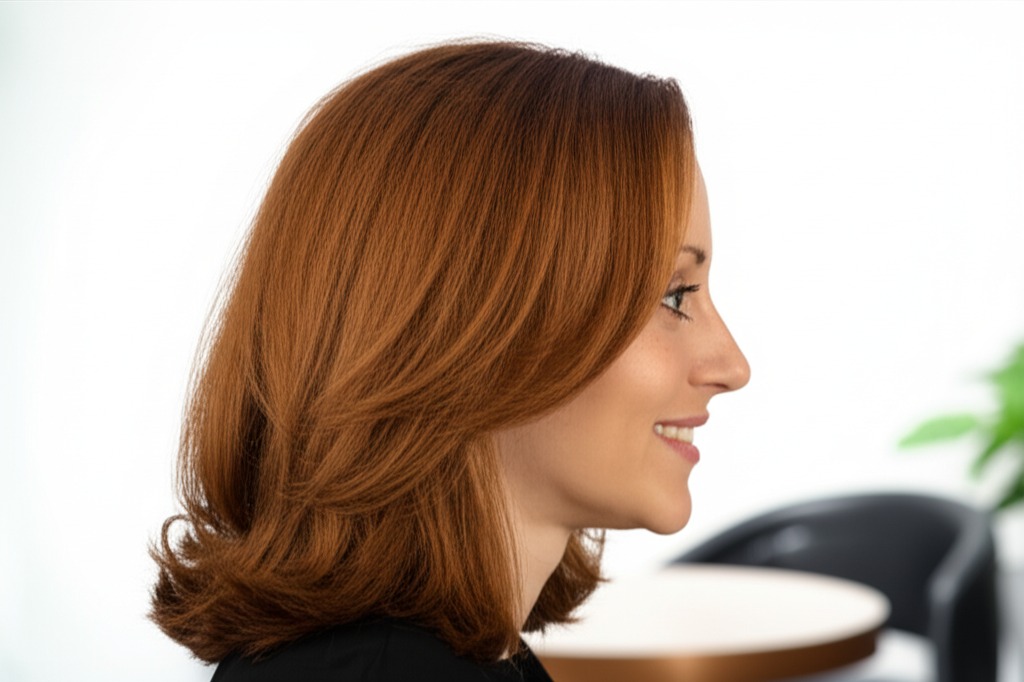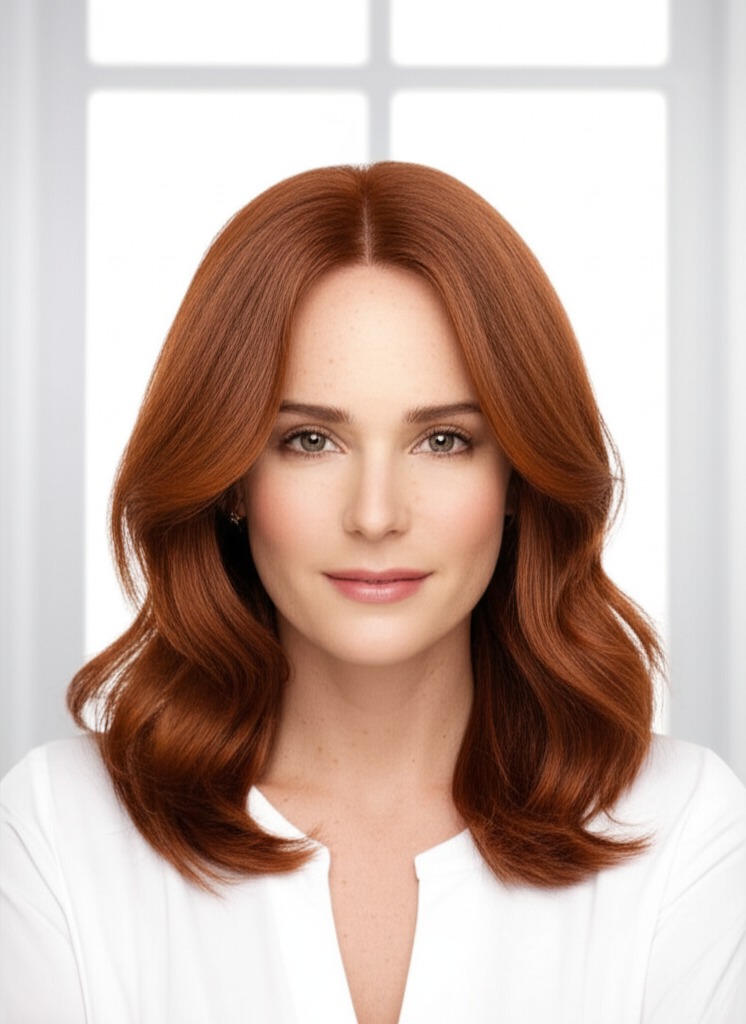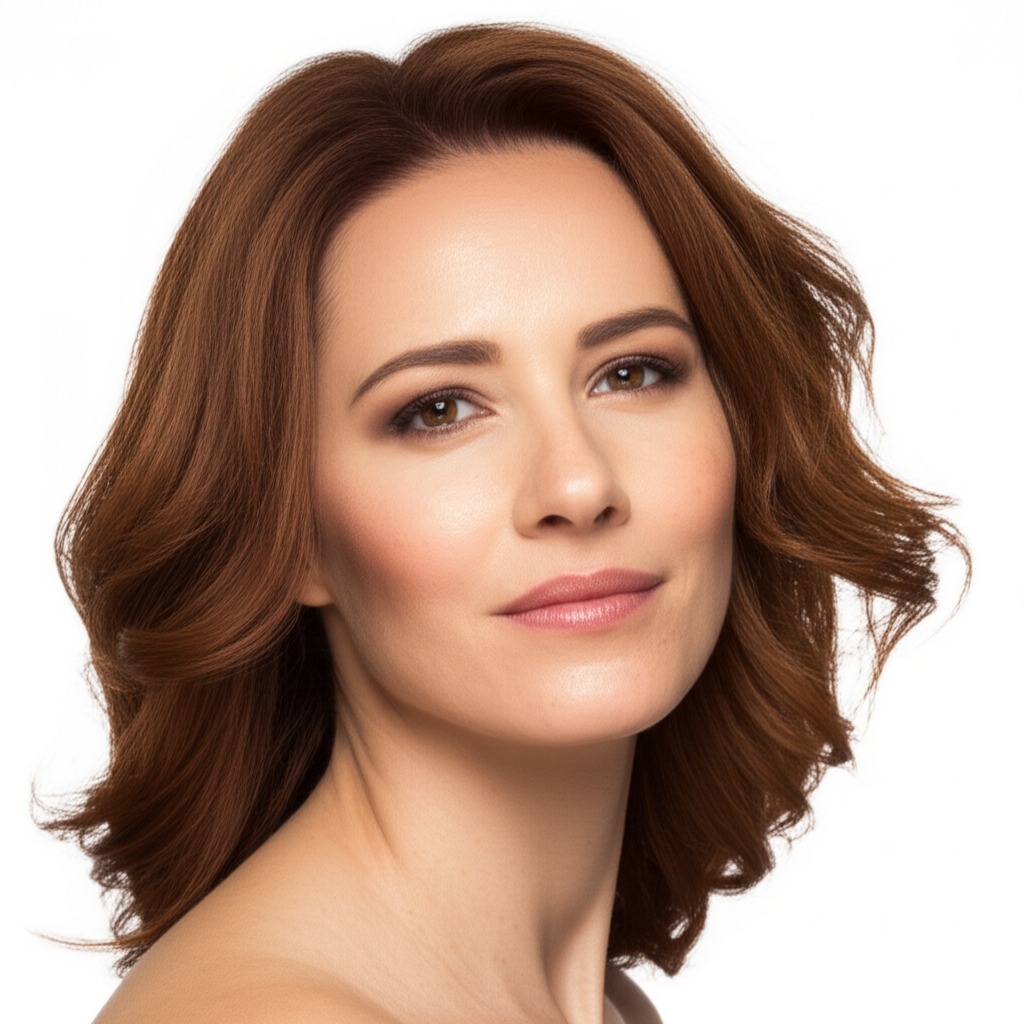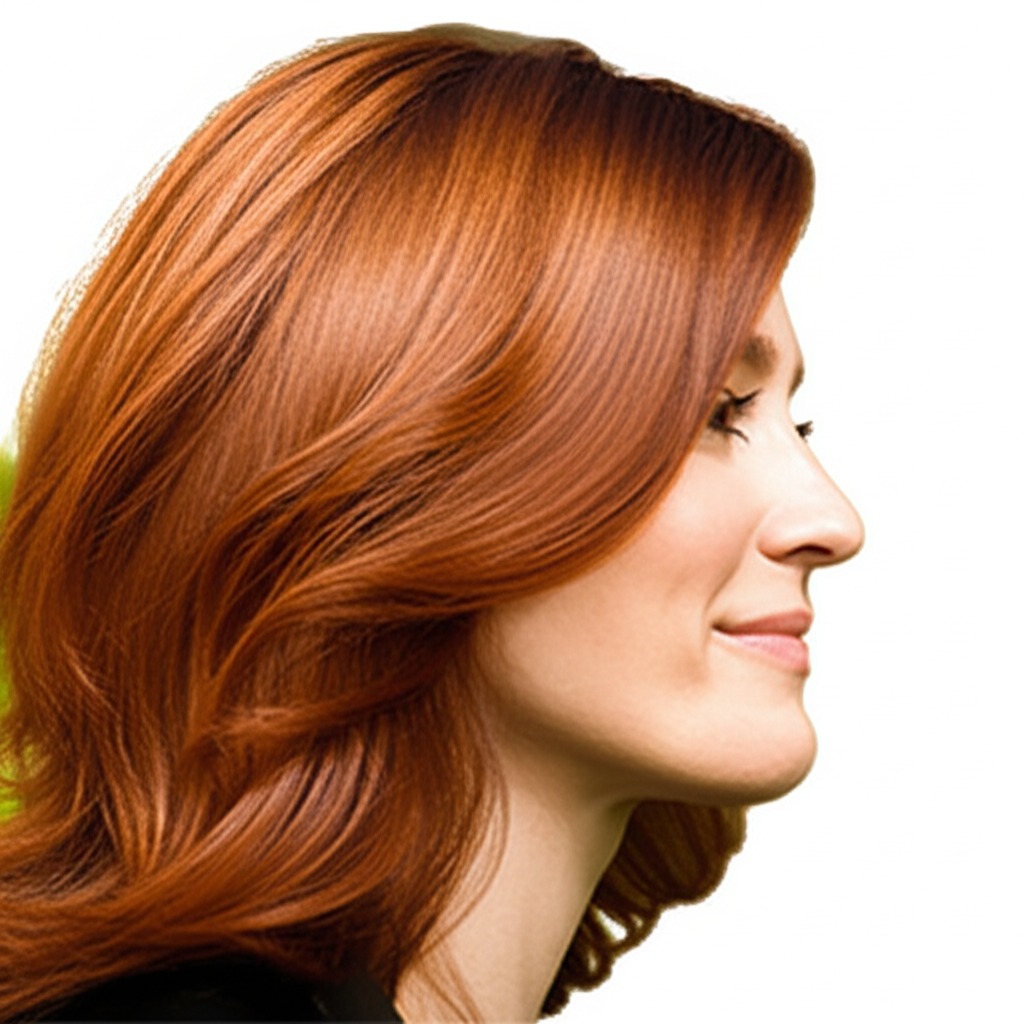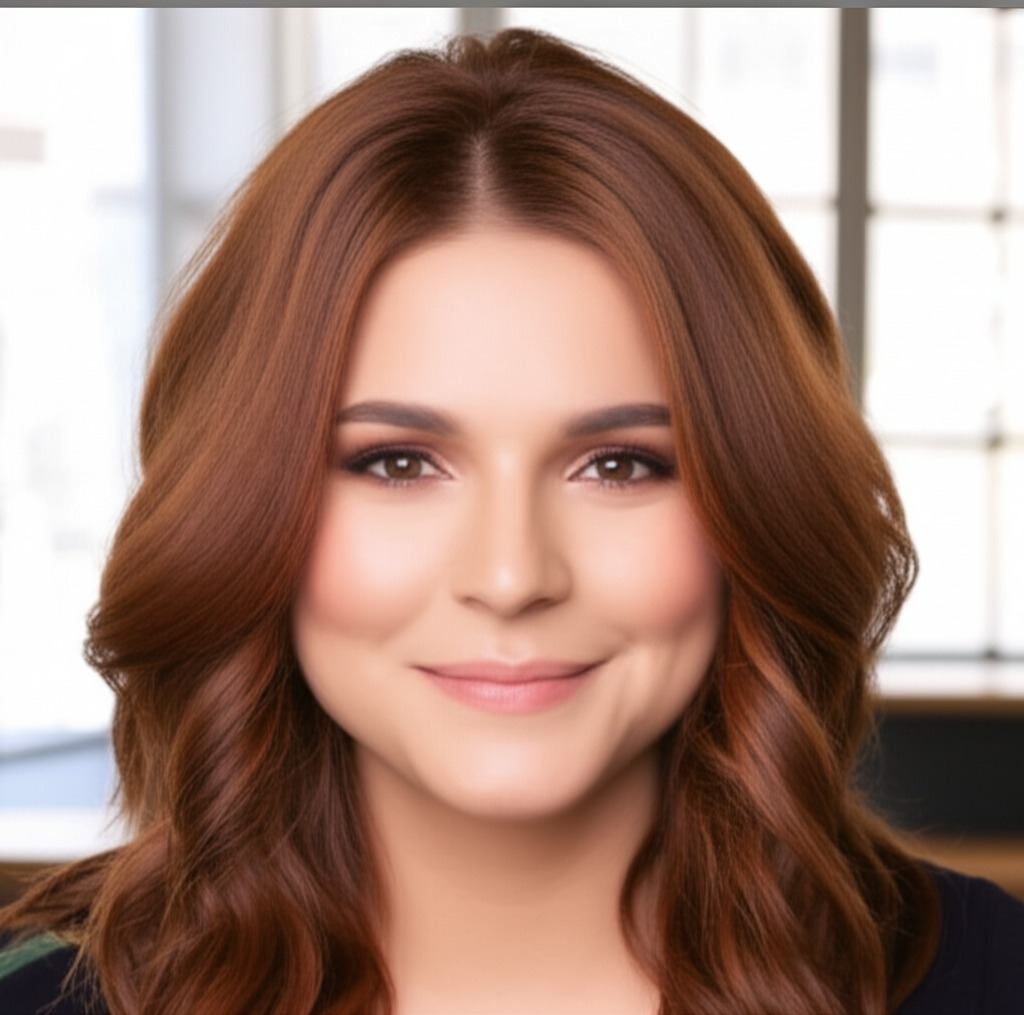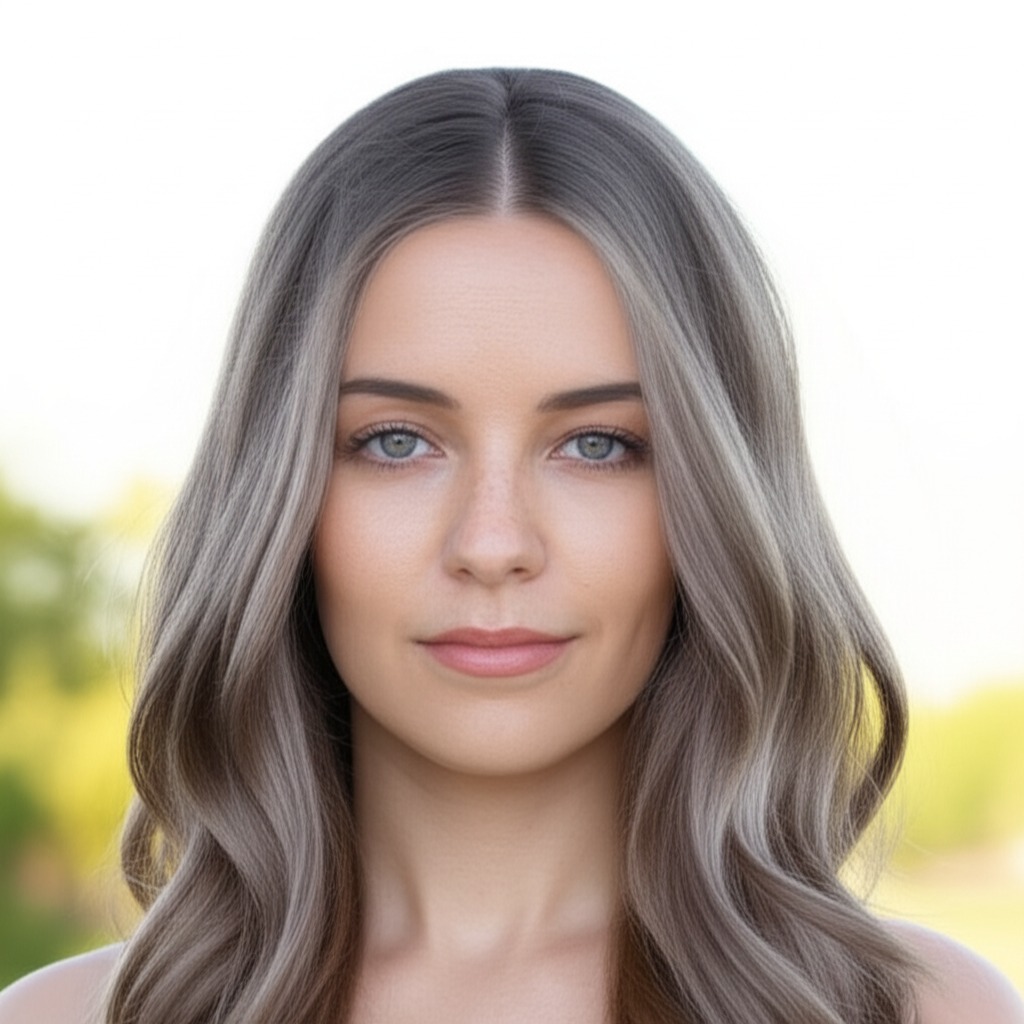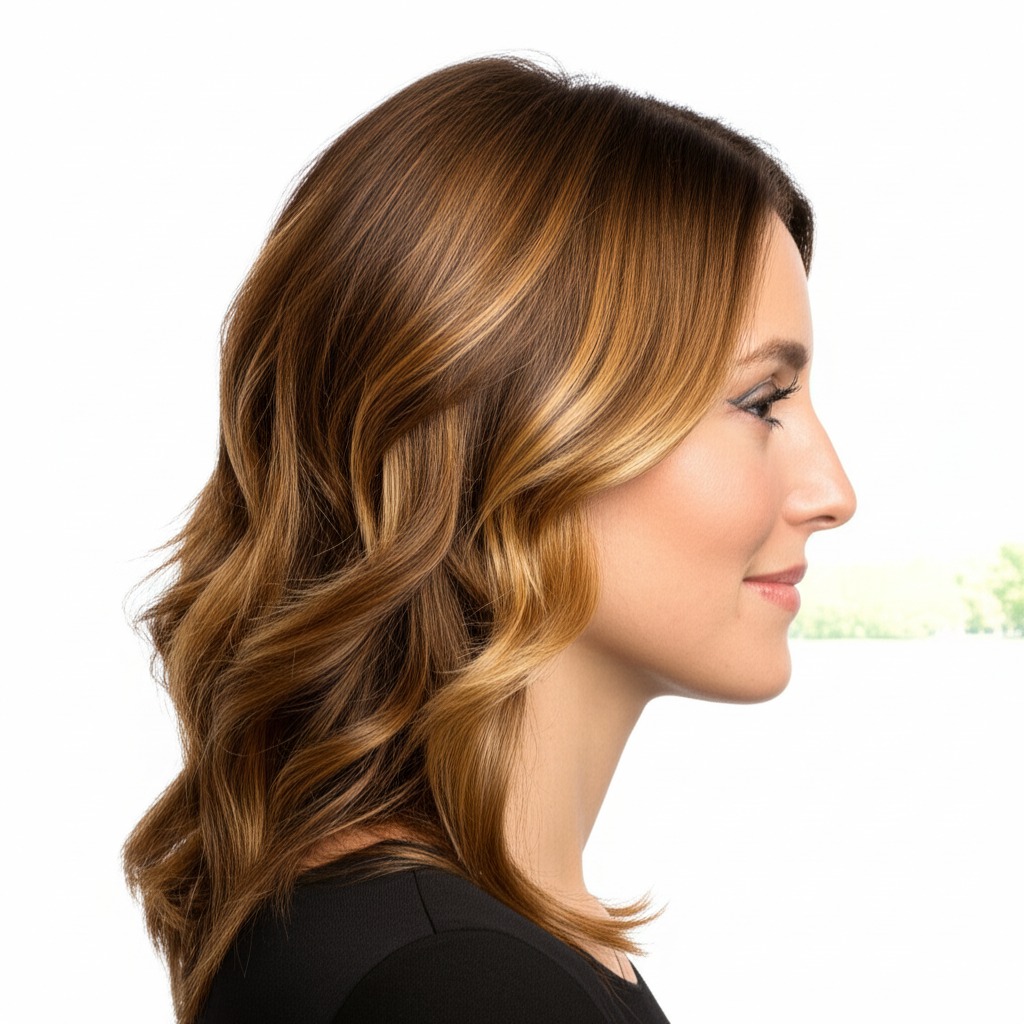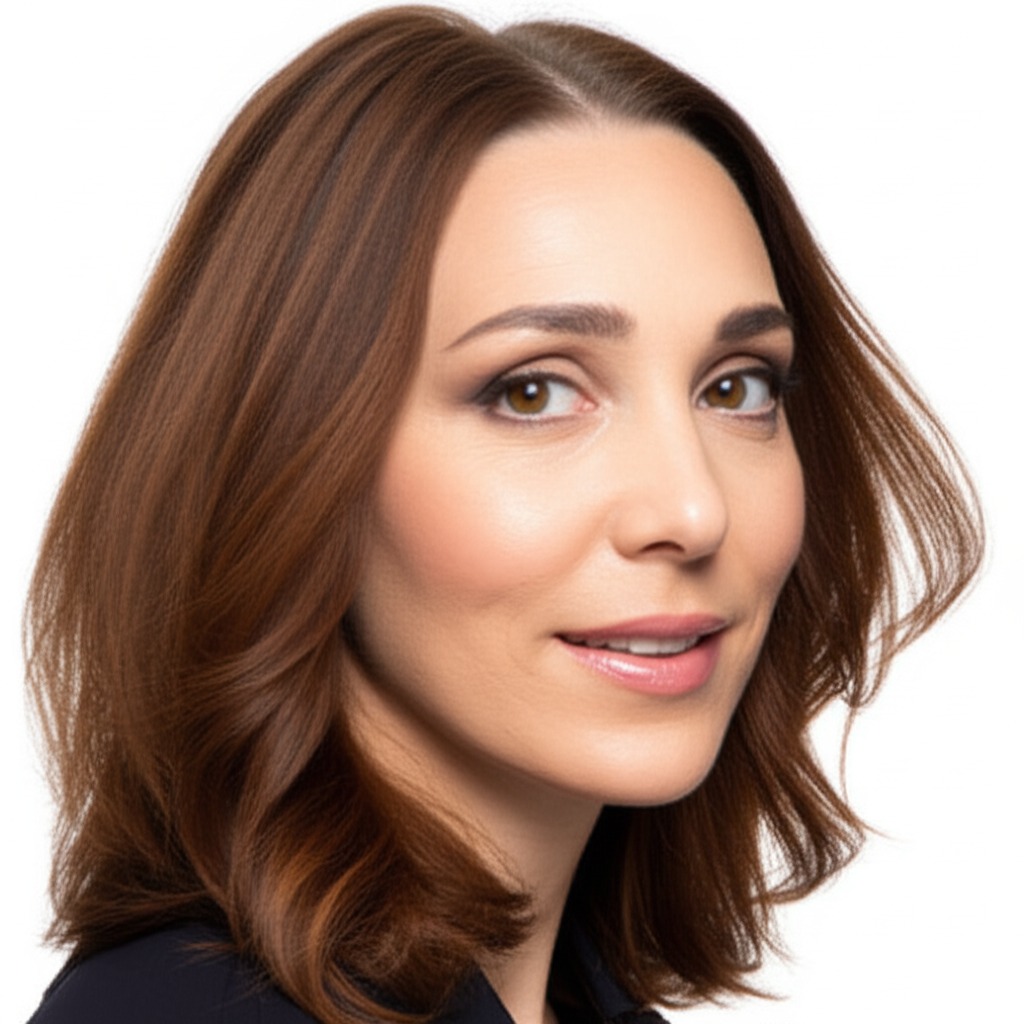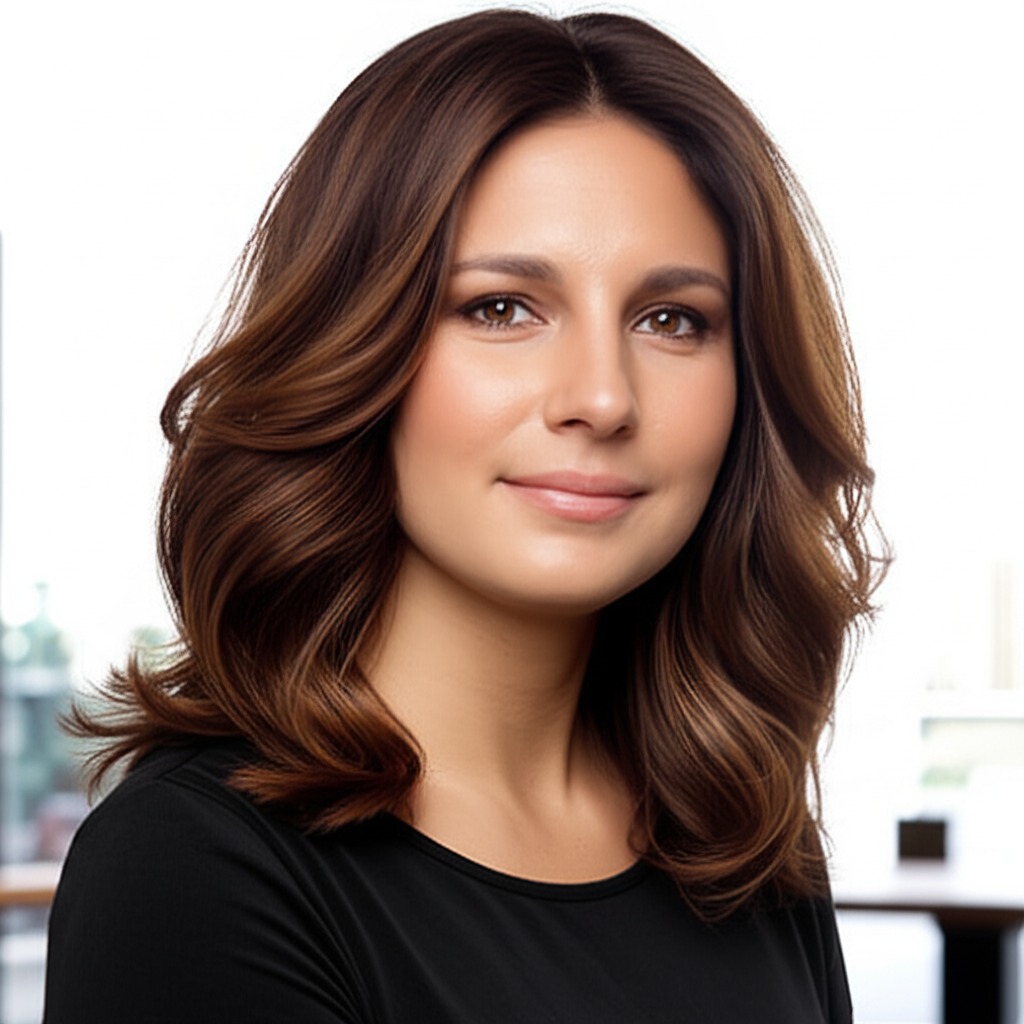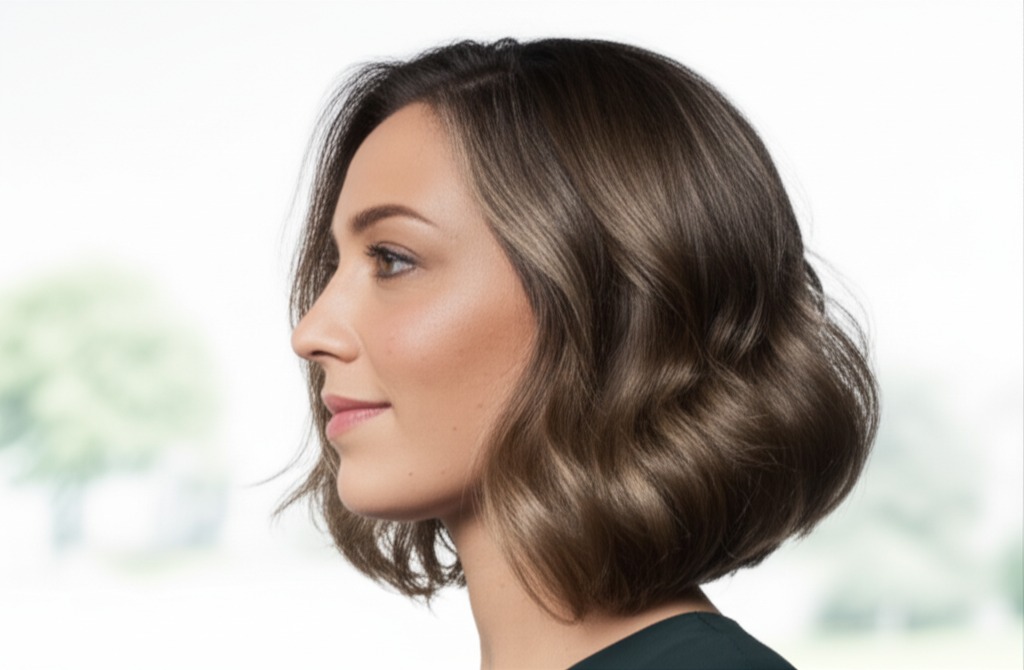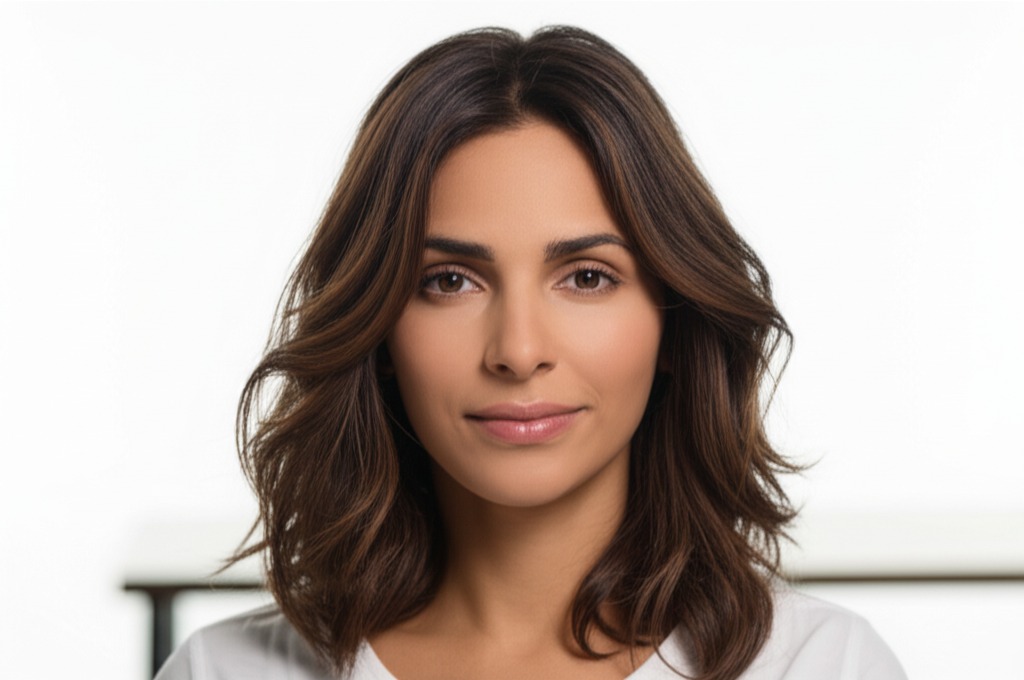#Warm Up Your Look with Cinnamon Brown Hair Color
Cinnamon brown is a universally flattering hair color that brings warmth and richness to your look. It's more than just "brown"—it’s a specific shade evoking the cozy, inviting tones of cinnamon spice. This guide will break down everything you need to know about achieving and maintaining this beautiful hue, regardless of your starting point or hair type.
#1. Understanding Cinnamon Brown: Shade Definition
Cinnamon brown isn't one single color; it’s a family of shades with subtle variations. Here's the breakdown:
- Undertone: This is key! Cinnamon brown is inherently warm. It leans towards golden, reddish-brown tones – think cozy fireplace rather than cool shadows.
- Depth (Levels): Levels refer to how dark or light your hair color is on a scale of 1-10, with 1 being the darkest and 10 being the lightest. Cinnamon brown typically sits between levels 3-6. A level 3 would be quite deep and rich, while a level 6 would have more lightness and dimension. The specific depth you choose will depend on your natural color and desired effect.
- Variations: You might see descriptions like "honey cinnamon," which adds even more golden warmth, or "spiced cinnamon,” which may incorporate hints of reddish-brown for extra complexity.
#2. Who Does Cinnamon Brown Flatter?
The beauty of cinnamon brown lies in its adaptability, but it shines particularly well on certain features:
- Skin Tone & Undertone:
- Warm Skin Tones (yellow or golden undertones): This is your ideal match! The warmth complements your complexion beautifully. Think olive skin, tan skin, and those who easily bronze.
- Neutral Skin Tones: Cinnamon brown can also work well with neutral undertones – you’ll just need to find the right depth of cinnamon to avoid washing out or looking too orange. A stylist will help determine this.
- Cool Skin Tones (pink or blue undertones): While not a natural fit, it's possible! A skilled stylist can adjust the formula with cooler tones and create a softened, more blended cinnamon brown that doesn’t clash. This requires careful assessment.
- Eye Colors: Cinnamon brown enhances almost any eye color:
- Brown Eyes: Creates a gorgeous, unified look – your eyes will appear even richer.
- Blue/Green Eyes: The warmth of the cinnamon provides a stunning contrast and makes these eye colors pop.
- Hazel Eyes: The multi-faceted nature of hazel eyes is beautifully highlighted by the warm tones.
- Natural Level Starting Points: Cinnamon brown can be achieved from various starting levels:
- Dark Brown/Black Hair (Levels 1-3): Requires significant lightening, potentially multiple sessions.
- Medium Brown Hair (Levels 4-6): The easiest transition – often requires only a single process or subtle toning.
- Light Brown/Reddish Hair (Levels 7-9): Can achieve the color with less processing, but may require careful tone control to avoid unwanted red tones.
#3. Technique Options: From Solid Color to Dimensional Looks
How you apply cinnamon brown significantly impacts the final result:
- Single Process: A uniform application of color from root to tip. Best for covering grays or achieving a solid, consistent look.
- Highlights/Lowlights: Adds dimension and depth. Highlights (lighter pieces) brighten the overall shade; lowlights (darker pieces) add contrast.
- Babylights: Very fine, subtle highlights that mimic natural sun-kissed hair – creates a soft, blended effect.
- Gloss/Toner: A semi-permanent treatment used to adjust the tone of existing color or enhance shine. Perfect for refining cinnamon brown and neutralizing unwanted brassiness.
- Balayage-Effect vs. Solid: Balayage involves hand-painted highlights that create a natural, gradual transition – less harsh lines than traditional foil highlighting. A solid application provides even coverage but lacks the dimensional effect of balayage or highlights.
#4. Maintenance & Longevity: Planning for Success
- Wash Frequency: Aim to wash your hair 2-3 times per week using color-safe shampoo and conditioner (more on that later).
- Toner Refresh: Cinnamon brown, being a warm tone, can fade over time or develop brassiness. Plan for toner refreshes every 6-8 weeks depending on how quickly your hair fades.
- Root Growth Pacing: If you're significantly changing your natural color, root touch-ups will be necessary every 4-6 weeks. Balayage and babylights allow for more gradual growth without harsh lines.
- Budget/Time Planning:
- Single Process: Relatively inexpensive (around $75-$150) and quick (1-2 hours).
- Highlights/Balayage: More expensive ($150 - $400+) and time-consuming (2-4+ hours). Consider the long-term commitment.
#5. Seasonality & Pairing with Cuts: Adapting to Your Style
- Seasonal Tweaks:
- Fall/Winter: Deeper, richer cinnamon brown tones look cozy and luxurious.
- Spring/Summer: Lighter, honeyed cinnamon browns feel fresh and vibrant.
- Cuts that Complement Cinnamon Brown:
- Bob & Lob (Long Bob): The warmth of the color adds dimension to these classic cuts.
- Long Layers: Highlights and balayage techniques really shine with long layers, creating movement and visual interest.
- Pixie Cut: A bold choice! Cinnamon brown can add unexpected depth and sophistication to a pixie cut.
- Event/Occasion Picks:
- Work: A more subdued cinnamon brown (deeper level) is professional and polished.
- Daytime: Lighter, brighter cinnamon tones are perfect for everyday wear.
- Evening: Richer, glossier versions of cinnamon brown exude elegance.
- Weddings: Consider a balayage-effect with subtle highlights to catch the light beautifully in photos.
#6. At-Home Care: Protecting Your Investment
- Sulfate-Free Shampoo & Conditioner: Sulfates strip color, leading to faster fading. Choose sulfate-free formulas specifically designed for colored hair.
- Clarifying Cadence: While sulfate-free is key, occasional clarifying shampoos (every 4-6 weeks) remove buildup and refresh the color. Don’t overdo it!
- Heat Protection: Always use a heat protectant spray before using any hot styling tools (blow dryers, straighteners, curling irons). Heat accelerates color fading.
- Color-Safe Styling Tips: Avoid harsh chemicals like bleach or peroxide in other styling products. Rinse hair with cool water to seal the cuticle and lock in color.
- Product Checklist: Color-safe shampoo & conditioner, heat protectant spray, leave-in conditioner (especially for dry/damaged hair), deep conditioning mask.
#7. Common Pitfalls: Prevention is Key
- Brassiness: Warm tones can oxidize over time, leading to brassy or orange hues. Use a purple shampoo occasionally to neutralize these tones (but don't overuse it!).
- Banding: Uneven color application – often due to improper technique or inconsistent product saturation. Professional coloring minimizes this risk.
- Patchiness: Occurs when the color doesn’t distribute evenly, especially on hair with varying porosity. A skilled stylist will perform a strand test beforehand.
#8. Pros & Cons: Weighing Your Options
Pros:
- Universally Flattering: Works well across various skin tones and eye colors.
- Warm & Inviting: Adds depth and richness to your look.
- Versatile: Can be adapted with different techniques for a range of styles.
Cons:
- Maintenance Burden: Requires regular touch-ups, toning, and color-safe care.
- Fade Risk: Warm tones tend to fade faster than cool tones.
- Potential for Brassiness: Requires proactive measures to prevent unwanted orange or brassy hues.
#9. Salon Consultation Script: Setting Expectations
Before your appointment, prepare to discuss these points with your stylist:
- "I’m interested in a cinnamon brown hair color."
- “Can you assess my natural level and undertone?”
- "What depth of cinnamon brown would best suit my skin tone?"
- “Which technique (single process, highlights, balayage) do you recommend for the look I want and to minimize damage?”
- "How often will I need touch-ups/toner refreshes?"
- “Can we discuss at-home care products to maintain the color’s vibrancy?”
- “What can I expect in terms of fading and potential brassiness?”
#10. FAQs: Your Burning Questions Answered
- Will cinnamon brown make my hair look orange? Not if applied correctly! A skilled stylist will adjust the formula based on your undertones to avoid an overly orange result.
- Can I achieve cinnamon brown with box dye? While possible, it’s risky. Box dyes often have unpredictable results and can damage your hair. Professional coloring is always recommended for best and safest results.
- How long does cinnamon brown last? The longevity depends on the technique used, your hair's porosity, and how well you follow at-home care instructions. Expect root touch-ups every 4-6 weeks with highlights/balayage.
- Can I go from black to cinnamon brown in one session? Unlikely without significant damage. Multiple sessions are usually required for drastic color changes.
- What's the difference between cinnamon and copper hair color? Cinnamon is a warmer, more muted brown with reddish-orange undertones; copper is significantly redder and brighter.
- Is purple shampoo necessary for cinnamon brown? It’s helpful for neutralizing brassiness, but use it sparingly (once or twice a month) to avoid unwanted cool tones.
With careful planning and the right care, you can rock this warm and beautiful hair color!
